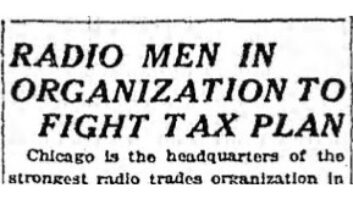
Earlier this month the Consumer Electronics Association announced that it was changing its name to the Consumer Technology Association. Now, normally this would not garner a ton of attention, but there are two reasons one should take notice.
The first is that these are the folks who put on the biggest show in our industry, CES, in Las Vegas. The second reason is that this organization has always moved with the times, and a name change is always a moment to consider what to look for in our industry as the new year approaches.
In fact, this is not its first name change. It started in 1924 as the Radio Manufacturers Association, representing what was then the bleeding edge of technology. As the industry has evolved through the years, the name has changed to reflect the times as well, to the Electronic Industries Association, then the Consumer Electronics Manufacturers Association. Finally, in 1999, they settled on the now-familiar Consumer Electronics Association.
To watch this transformation is to watch our industry change over time, from a business that was mostly industry-specific individuals and hobbyists, to the domain of larger companies that covered many products and markets, to finally the creation of an entirely new industry on its own. And in a weird way, with the growth of smart homes, automation and the Internet of Things (IoT), we are returning to the days of individuals and a one-on-one relation with technology.
The mob of hobbyists around IoT and 3D printing looks a lot like the early days of radio. And the tinkerers and inventors in the maker revolution are getting their hands dirty in the guts of electronics as well, just as in the early days of our industry.
Back to the future
But, most importantly, our products are starting to come full circle, to shed their uniqueness in the market and become part of everyday life. In this way, the change from the industry parlance of “electronics” to the more mass market “technology” makes perfect sense, as we become more and more intertwined in the day-to-day lives of our audience.
We see this in how technology has become more than just techs and specs, becoming now part of our identity. Whether you are talking about GoPro, Galaxy, Beats or Tesla, people are attaching to these products and brands not just for what they do, but also for how they think about them. (Or how manufacturers would like people to think about them.) It’s become personal iconography, where the phone you carry and the headphones you wear are as important as your clothes.
And as electronics have grown into this inclusive world of pervasive technology, the channels have adapted as well. Once the specialty shops were the only place to find these products; now you can run into Walgreens to get your Bluetooth accessories, and buy battery chargers for your phone at the airport while waiting for your flight. And the retailers that have traditionally understood personal iconography the best have started carving out a place in their world for technology as well. Chains such as Urban Outfitters now have entire floors devoted to technology products.
Our world of technology has become a thread that ties all types of products together, from your car to your home, your office, and your own personal devices. It lives in your home controllers, in your SUV’s multimedia systems, and on the screen in front of you in your airline seat. In fact, it is this exact thread which ties everything together that has led to the latest wave of IoT and home-automation products appearing on the market.
And this is why the name change is so relevant.
As we steam into yet another CES this January, it bears watching for everyone who plans to launch into this market next year. It means you have to think twice as hard about your audience, your offering and your channel. You don’t just have to live in our world; you have to live in a greater world as well. And you have to consider what this means for your branding, your messaging and your marketing. Because we have finally arrived at that point where our brave new world is … well, just the world now.
Christopher Caen is a frequent contributor to TWICE and The Huffington Post. He is also a partner and chief brand strategist at Theory Associates, a strategic branding agency that creates demand for some of the top names in technology. He can be reached at [email protected].












